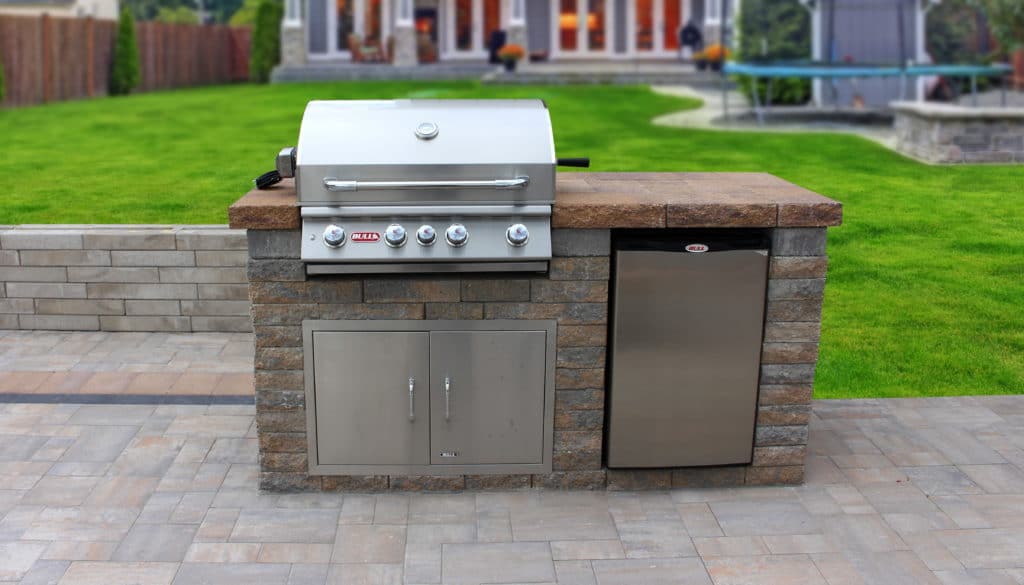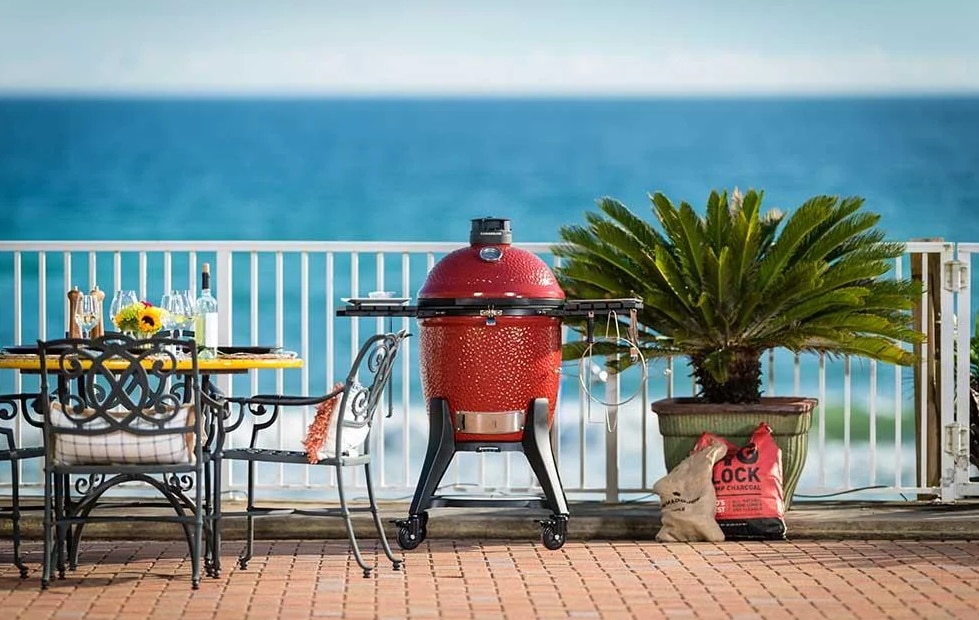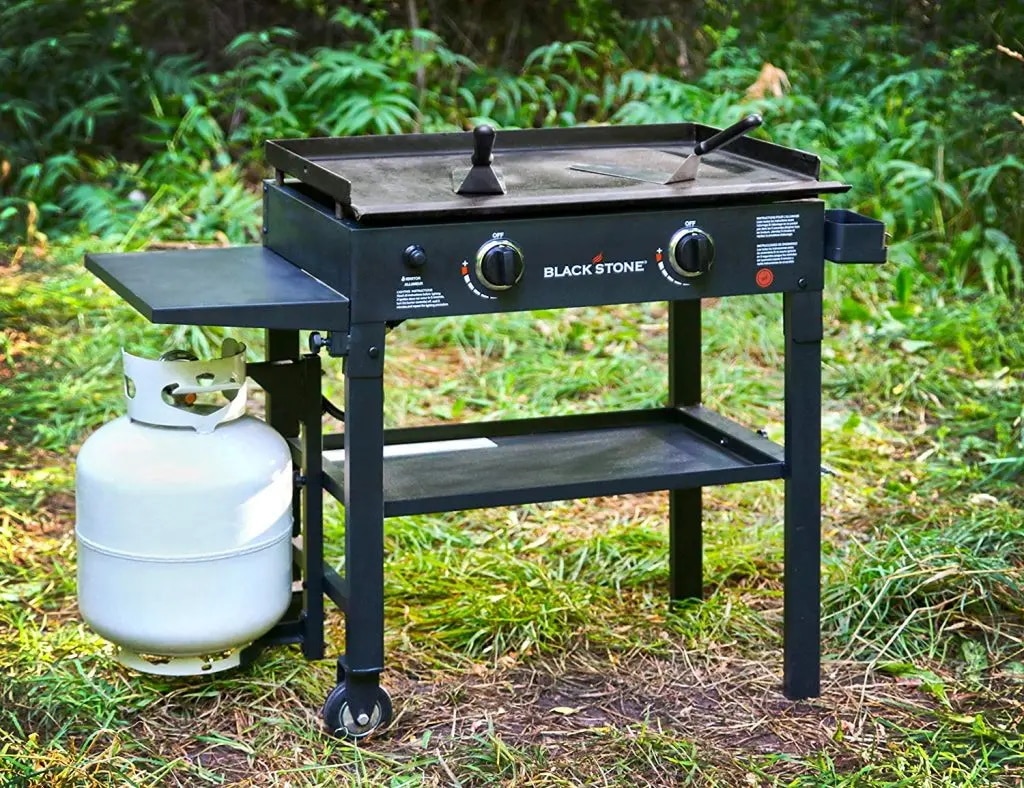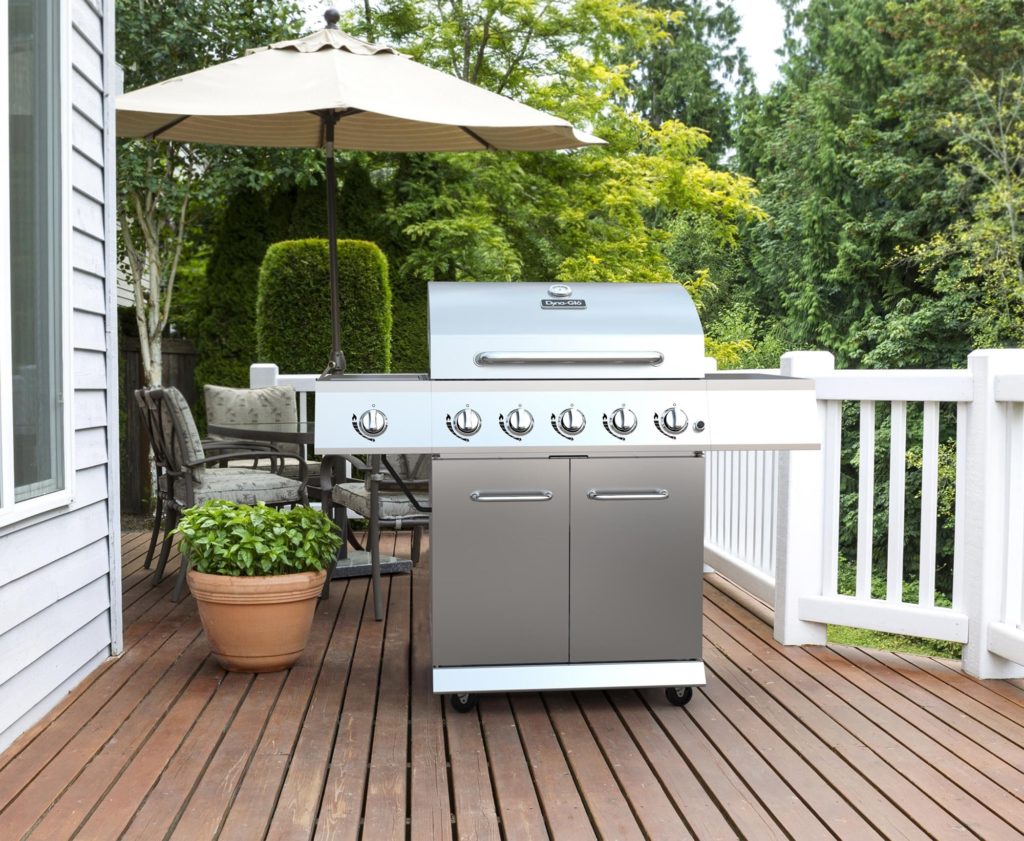

Checking the level of propane in your tank is an important part about owning one.
Propane tanks offer efficient cooking in many circumstances. However, the tanks are prone to run out of gas after prolonged use. You would not want the inconvenience of running to the store in the middle of your cooking when tanks run out of propane.
This is why understanding how to check propane level tank is core to safe cooking. There are several methods of checking propane level tanks.
Whether you own a large or small tank, it might be a challenge to determine the capacity of propane left in the tanks. Fortunately, there are quick methods of checking your tanks before filling them up. And in this guide, we will walk you through them.
The most convenient methods of measuring propane tank level are using gauges, propane tank monitors, using hot water, a scale, and checking the cooking time.
Understanding how to check the level of propane tanks is beneficial in many ways. First, the feeling of cooking while knowing that propane is at a convenient level allows you to cook peacefully. Interrupted cooking spoils the entire process.
Then is the aspect of planning. Once you discover that the gas level is not enough, you can fill it on time to prepare your meals. You should develop the habit of measuring your propane tank level regularly.
If you don’t enjoy the benefit of automatic service delivery, checking the propane level should be a vital part of ascertaining that you have a regular propane supply to set you going. It is essential to note that most propane tanks lack gauges that show the extent of propane. Therefore, learning how to check your tanks manually comes in handy.
Other appliances show the level of propane in tanks. A tank monitor is quite helpful in this sector. Furthermore, you can use hot water or a scale. These methods are pretty convenient and provide accurate results just as a gauge.
You can also check the cook times and level the settings accordingly. People have different preferences in measuring propane tank levels. This piece will guide you on how to measure your propane tank level using the techniques mentioned.
This is one of the most straightforward methods of reading propane gas levels.
Gauges offer an instant reading of these levels. Furthermore, they are accurate, so you won’t need to worry about false readings. Gauges are especially useful in measuring the level of propane in portable liquid propane gas tanks.
Checking propane levels in portable tanks are possible with several gauges in the market. Types of meters include inline pressure gauges, digital tank scales, and analog scales.
According to experts, the best type of gauge for measuring the propane level in tanks is the Char-Broil Universal Propane Tank Gauge. The gauge has an indicator that is easy to read. It displays gas levels in the best way. The level of accuracy is extraordinary. It allows users to know the exact amount of gas in tanks before grilling begins. Additionally, the gauge display shows temperature changes. Char-Broil tanks are easy to install. You won’t need any tools in the process.
Propane cylinders Trusted Source 8 Types of Propane Tanks - DoItYourself LPropane tanks are mainly used alongside stoves, water heaters, grills, generators, and welding equipment. These bottles or metal cylinders contain propane, a type of alkaline gas that has been compressed and transformed into liquid form. Transporting, storing, and using propane safely can only be possible if it is held inside tanks or containers. Since propane has various applications, many types of tanks are used as propane containers. Below are some common types. www.doityourself.com that come with gauges show the level of propane in percentage. The gauges read 100% when the tanks are full (they weigh twenty pounds when full).
Notably, gauges are controlled by pressure inside the tanks. They can read the level of pressure that comes out of these tanks. These gauges are found in home repairs and retail outlets. They are easy to interpret, and installing them is a straightforward process. You can remove the gauges when your tanks are empty and install it when you replace them.
Propane tank monitors are excellent automated delivery systems.
It is vital to understand the ease by which these systems operate. Additionally, propane tank monitors are also suitable for measuring gas levels like gauges. They have a unique way of operating. This is a form of smart technology and comes with the functionality of smart devices that measure levels.
Propane tank monitors alert propane suppliers when the level of propane in tanks is low. They are convenient in most tanks and offer amazing results in large ones. Learning how to check propane levels in large tanks entails understanding how to operate propane tank monitors.
Propane tank monitors are beneficial in several ways. They allow for automated delivery services by alerting suppliers when the level of propane in tanks is low. Therefore, you can carry on with your business and let the monitoring systems work for you. The continuous supply of propane through automated systems will give you peace of mind.
Using hot water is one of the fastest ways of having an approximation of the level of propane in tanks.
You should understand how to check propane tank level with water before engaging in the practice. This method will grant you the satisfaction of knowing whether the level of gas is low and taking measures or whether the level is at the optimum condition to continue with your cooking.
You will need to fill a cup with hot or warm water from the tap to begin the process. Pour the water down the side of the propane tank and run your hand along the side of it. Proceed until you feel a cool sensation. The spot where you first feel coolness is the level of your gas.
This method is effective as propane gathers heat from the water, leaving the tank wall above hot. However, using hot water does not provide accurate results as other methods.
The scale method offers more accurate readings on propane gas levels.
You first need to disconnect the tank from its grill. Be careful while you do so to avoid unnecessary damages to your grill or tank.
Disengaging these appliances can be tricky at times. You should also be prepared to do some simple calculations when using scales. Scales can be found in many retail or wholesale outlets.
Propane tanks are usually stamped with weight signs. Notably, the weights range from seventeen to nineteen pounds.
A filled propane tank weighs around twenty pounds. They may not be full to the brink; still, the weight should lie around that area.
Ascertain the correct weight by placing the tank on the scale. Once you get the readings, subtract from the weight labeled in the tank. Do not leave any figures out or round off. You need to have as accurate readings as possible. Take note of the results of the calculations to know the amount of propane left in your tank.
This method is complex and requires several steps to get accurate results.
Notably, measuring cooking time is an excellent approach due to its level of accuracy. Furthermore, it can be used in various types of propane tanks.
This process is useful in predicting the time left before your tank is fully depleted. As previously mentioned, a full gas tank weighs about twenty pounds.
Convert the weight into gallons by dividing it by 4.2. It is also essential to note that one gallon of propane gives ninety-two thousand BTUs. You will need to know the BTU per hour figures on the grill.
It will also be useful if you factor in the heat-control settings your grill will operate. Once you divide the weight of your tank by 4.2, multiply it by ninety-two thousand, and then divide by the maximum BTU per hour. This figure will be your cooking time.
Propane tanks by far offer the best cooking experience. However, owning one comes with responsibilities. You will need to always keep tabs on the level of propane in your tanks to avoid inconveniences. Therefore, have a firm grasp of how to check propane tank levels and fill them promptly once you discover that the level is not where you desire.
There are several methods of checking propane tank levels. Understanding every technique is advantageous and will save you in the long run. Make good use of your propane tanks by regularly inspecting the level of gas inside.





